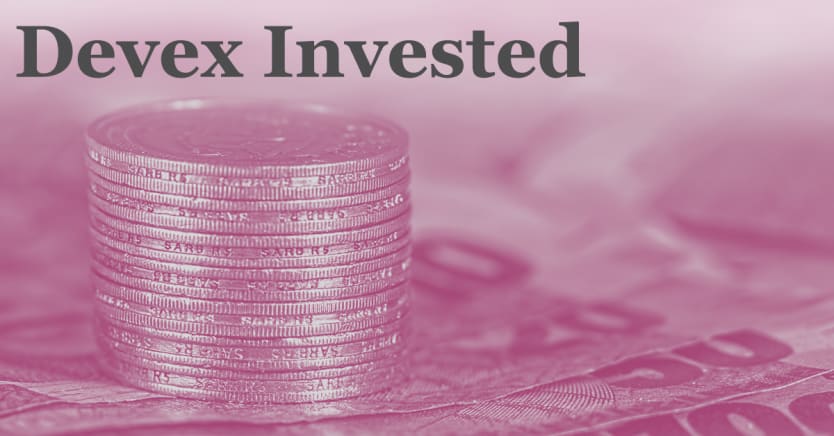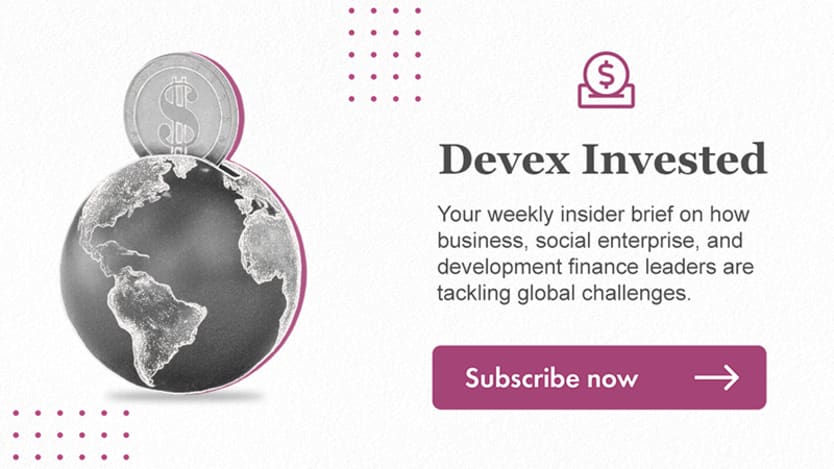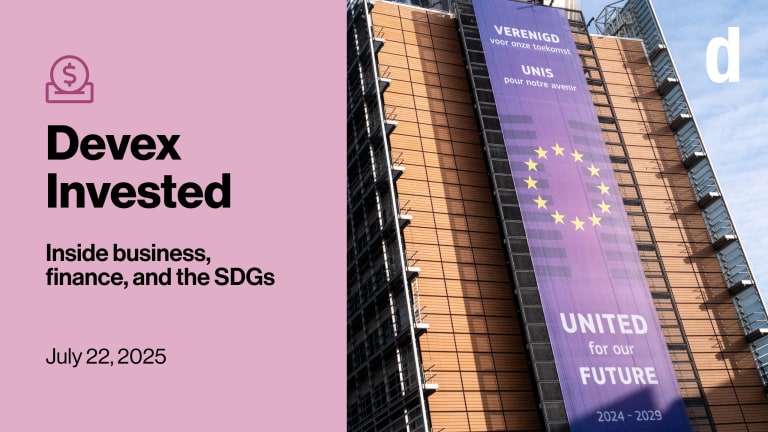
The first rule of competing with China’s Belt and Road Initiative is: You do not explicitly state you are competing with China’s Belt and Road Initiative.
Some of the world’s biggest donors are doing just that — by announcing major infrastructure initiatives targeting low- and middle-income countries clearly aimed at providing an alternative to China’s ambitious plan to invest an estimated $1 trillion in emerging economies by 2027. But their official policy documents and press statements hardly mention the word “China.”
This is a preview of Devex Invested
Sign up to this weekly newsletter inside business, finance, and the SDGs, in your inbox every Tuesday.
The latest such effort, announced Sunday, is the G-7’s Partnership for Global Infrastructure and Investment, or PGII, which aims to mobilize $600 billion by 2027. It follows the U.K.’s new development strategy and the EU’s new “Global Gateway” initiative, which aim to spend £500 million and mobilize €300 billion, respectively, in low- and middle-income countries.
Here’s a look at the three efforts:
G-7’s Partnership for Global Infrastructure and Investment
• The PGII seems to repackage the G-7’s “Build Back Better World” partnership announced last year, though the White House said that this is the outcome of that effort. The United States said it will mobilize $200 billion of the total funding.
• There are four priorities: tackling climate change and improving energy security, expanding secure digital networks, advancing gender equality and equity, and improving health infrastructure and global health security.
• The PGII will mean better coordination among the Group of Seven leading democratic countries and their institutions, which will increase efficiency and catalyze new financing. The investments will be carried out in a transparent and sustainable way that will “lead to better outcomes for recipient countries and communities,” the White House said.
• The announcement was met with skepticism from some experts at the Center for Global Development, including Ranil Dissanayake, who wrote on Twitter: “I am constantly confused as to why Western politicians think that a tiny bit of cash and a big sign saying "hey, we're great, we have strong western institutions" will provide competition to the Belt and Road. It's beans. Not magic beans. Just beans.”
Europe’s Global Gateway
• In December 2021, the European Commission announced the Global Gateway, a “values-driven” infrastructure strategy aiming to “mobilize” €300 billion ($317.48 billion) in investments by 2027. The strategy was a big conversation topic at the recent European Development Days — with a debate about whether it is a “Belt-and-Road-rivaling gamechanger, or just preexisting money and ‘heroic assumptions,’” my colleague Vince Chadwick writes.
• Funding for the strategy is meant to come from the EU budget, member states, and the private sector, but Vince reports that the last two funding streams are “aspirational for now.”
• Also of note, Vince tells me about 90% of EU infrastructure investments are done through EIB, EBRD, France, and Germany, with the banks typically co-financing with other DFIs or MDBs. There are also real questions about who will do this infrastructure work, he says, as the EU’s open procurement rules mean Chinese firms often win projects.
British Investment Partnerships
• Infrastructure is also an important part of British Investment Partnerships, a new aspect of the U.K. Foreign, Commonwealth & Development Office’s new international development strategy, my colleague William Worley writes. The strategy announced about £500 million ($613.3 million) for British Support for Infrastructure Projects, which will facilitate concessional loans to governments for “quality and affordable infrastructure finance.”
• But the U.K.’s aid cuts have created significant uncertainty that has led to a reduction of typically long-term infrastructure investments, Abhishek Sharma, a senior director at TradeMark East Africa, tells Will.
• As for competing with China in Africa, “the current strategy seems to be a difference between the words which are being spoken and the action on the ground,” said Sharma, characterizing the U.K. as more focused on rhetoric and China on action.
Background reading: Calls grow louder for US aid rethink in Indo-Pacific
Tracking EU funding in Africa
The EU plans to spend $19.5 billion in Africa, and my colleague Miguel Antonio Tamonan has the details about where it’s headed. Of the 44 countries expected to receive funding, Nigeria got the biggest allocation, with Niger a close second.
Priority areas across the funding include green transition, sustainable growth and decent jobs, digital transformation, and human development — aka health and education.
Read: Inside the EU’s $19.5 billion development programs for sub-Saharan Africa (Pro)
+ To keep up to date with global development's latest funding opportunities, in-depth news, and analysis, be sure to sign up to Devex Money Matters, a free, must-read Monday newsletter.
Plus, if you haven’t yet, start your 15-day free trial of Devex Pro to access all our data-driven funding insights and essential analysis.
Deep freeze
Finland has cut all of its core funding to United Nations initiatives until an inspection of their risk management mechanisms is completed, my colleague David Ainsworth reports.
The decision came after accusations of mismanagement of funds at the U.N. Office for Project Services, whose embattled Sustainable Investments in Infrastructure and Innovation initiative is headquartered in Finland. It’s the latest in the fallout from a scandal at the agency that has also led to the resignation of UNOPS’ executive director, calls for investigation, and board action.
UNOPS: Finland freezes funding to UN agencies in wake of UNOPS probe
DevExplains: An inside look at the UNOPS scandal
What we’re reading
Adani Foundation to deploy $7.7 billion for social programs in India. [Devex]
World Bank targets return to office in hybrid format. [Devex]
BP paid rural Mexicans a “pittance” for Wall Street’s favorite climate solution. [Bloomberg]
Companies’ net-zero emissions goals don’t add up to a net-zero planet. [Bloomberg]









